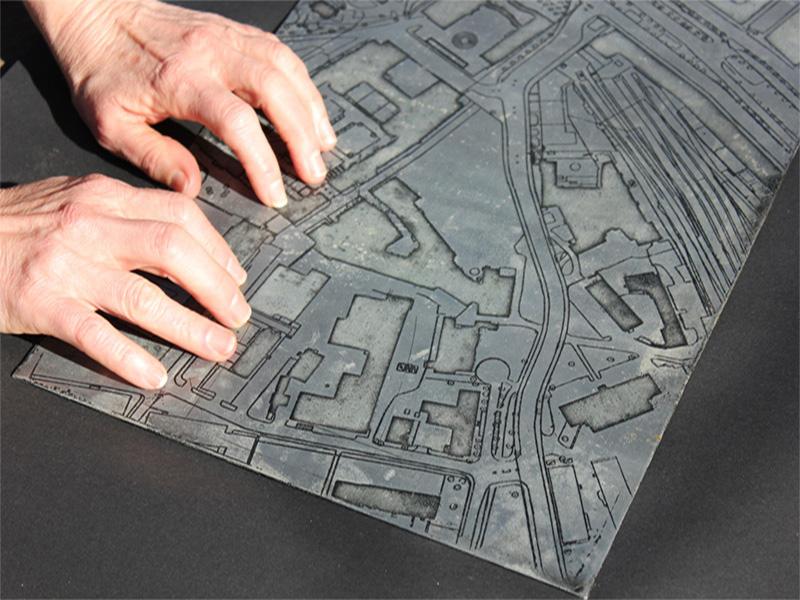Discovering architecture through tactile models
Possibilities of haptic models as a tool for visually handicapped people to understand the space in which they live and orientate themselves are a source of inspiration in our practice. We consider tactile models as a crucial learning aid material to understand architectural elements and physical phenomena such as reverberation or light intensity changes. Moreover they make possible territory orientation, distance and scale comparison.
This experience allows visually impaired people to experiment with the surrounding environment and to better understand spatial elements and their interrelationships. It is also crucial to understand division of space and architectural itineraries, helping decision making in complex situations. Unlike Braille, mastered only by a low percentage of blind people (10-25%), volumes and shapes discovered by touching sensations can be used as a learning tool by everybody.
Possibilities of haptic models as a tool for visually handicapped people to understand the space in which they live and orientate themselves are a source of inspiration in our practice. We consider tactile models as a crucial learning aid material to understand architectural elements and physical phenomena such as reverberation or light intensity changes. Moreover they make possible territory orientation, distance and scale comparison.
This experience allows visually impaired people to experiment with the surrounding environment and to better understand spatial elements and their interrelationships. It is also crucial to understand division of space and architectural itineraries, helping decision making in complex situations. Unlike Braille, mastered only by a low percentage of blind people (10-25%), volumes and shapes discovered by touching sensations can be used as a learning tool by everybody.

Touching sensitivity
These touching sensations are enhanced by the highly tactile sensitivity of visually impaired people, which is far more finely developed than people experiencing objects without disability. Through tactile tours along the territory, the city and its buildings we enter a world of opportunities to explore our culture and heritage. This process is crucial to people with visual impairment but also highly enriching for the rest of the society. A key point is social conscience. Tactile models help society to understand that visually handicapped people have also access to architecture and space around us.
These touching sensations are enhanced by the highly tactile sensitivity of visually impaired people, which is far more finely developed than people experiencing objects without disability. Through tactile tours along the territory, the city and its buildings we enter a world of opportunities to explore our culture and heritage. This process is crucial to people with visual impairment but also highly enriching for the rest of the society. A key point is social conscience. Tactile models help society to understand that visually handicapped people have also access to architecture and space around us.
The project Santander para todos (Santander for everybody)
Aiming to make the Bay of Santander accessible to everybody, we use a tactile model and a guided tour to help visually impaired people to discover the nature, evolution and history of the bay.
Using a removable layer system to show the different levels of the see, both in high and low tide level, we explain the difference between the main canal and the sandy area.
Through detachable and exchangeable land and water model pieces we discover the historical evolution of the bay and the different filling process throughout the time.
Project in collaboration with ONCE (Spanish visually impaired organisation) and COACAN (Cantabria’s Architecture Official College).
Aiming to make the Bay of Santander accessible to everybody, we use a tactile model and a guided tour to help visually impaired people to discover the nature, evolution and history of the bay.
Using a removable layer system to show the different levels of the see, both in high and low tide level, we explain the difference between the main canal and the sandy area.
Through detachable and exchangeable land and water model pieces we discover the historical evolution of the bay and the different filling process throughout the time.
Project in collaboration with ONCE (Spanish visually impaired organisation) and COACAN (Cantabria’s Architecture Official College).